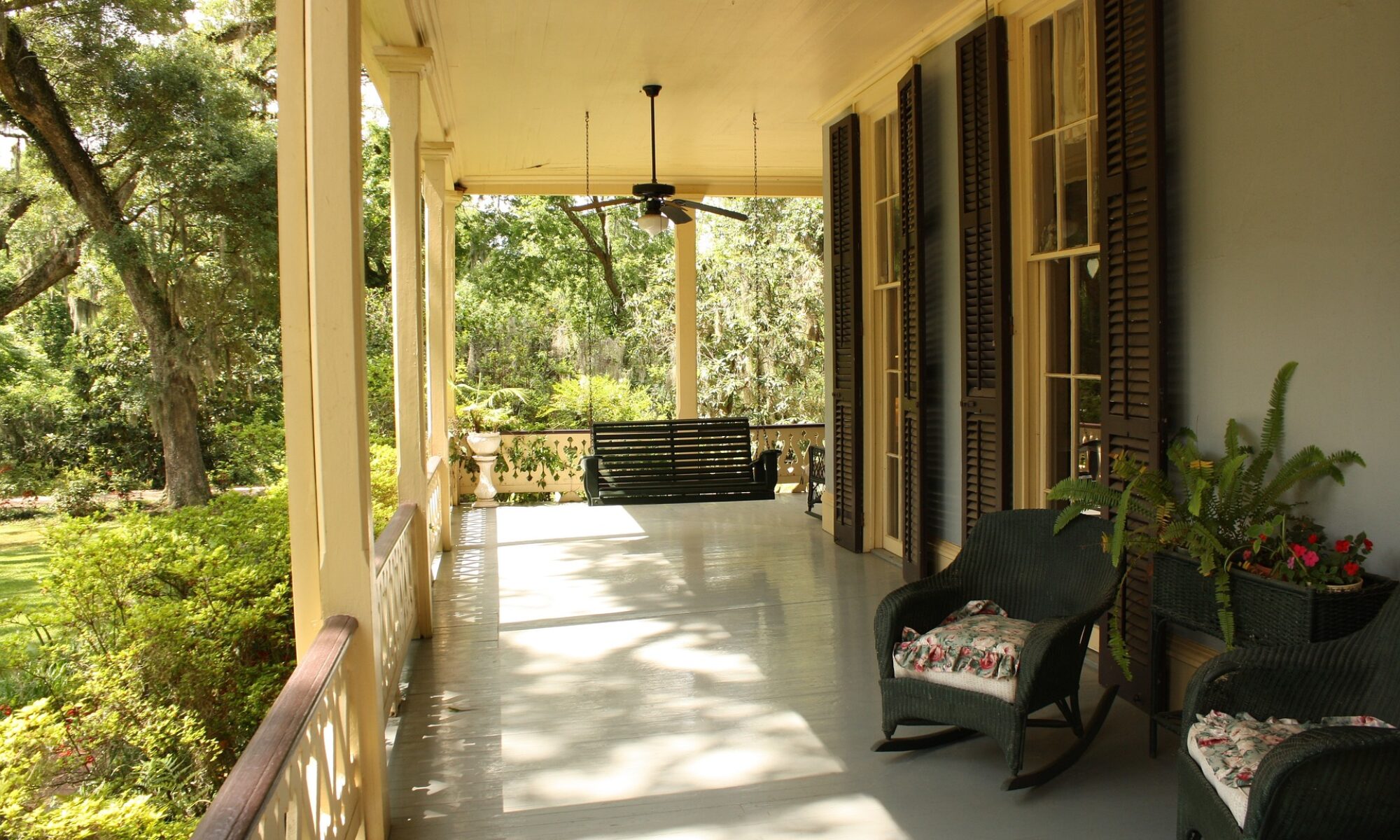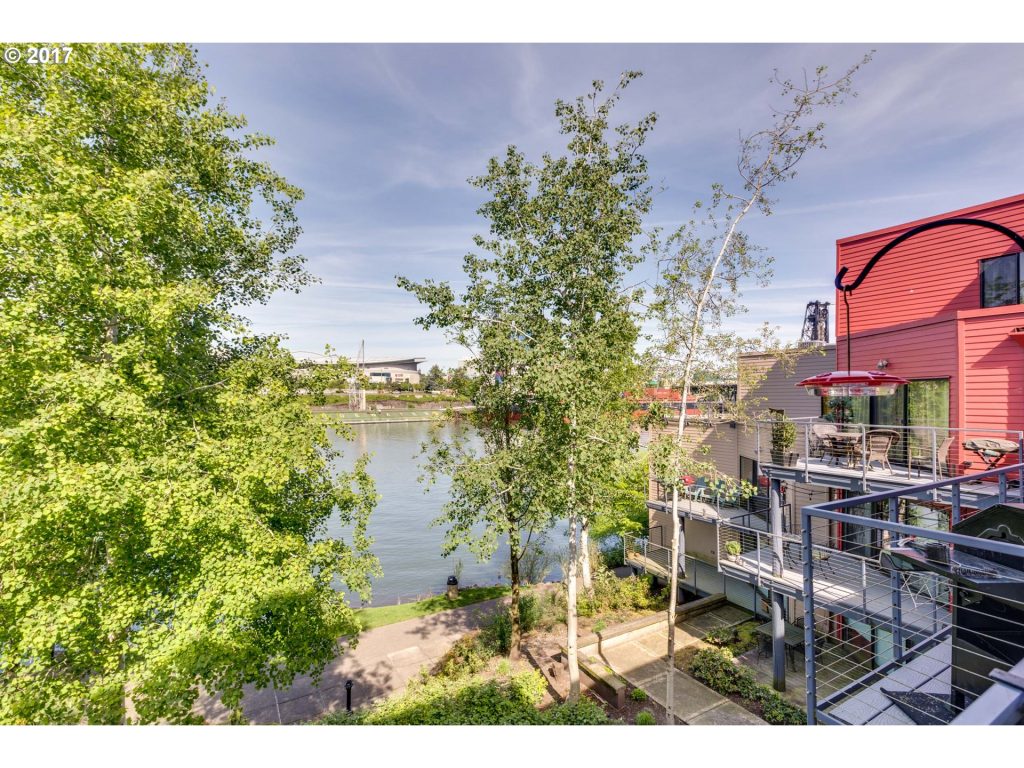
Collaboration, creativity, sustainability, and integrity. These are the four principles guiding Colorhouse paint, a local, independent paint company with a unique mission: to make the world more colorful and less volatile.
Colorhouse was founded in 2005 by Virginia Young and Janie Lowe, two artists who had originally started a business called YOLO Paints. They spent all day in rooms thick with fumes from the paints they were using, and were coming home at the end of the day exhausted, with headaches and sore throats. Their concern over the toxicity of their materials fueled their research into healthier options, which lead to their immersion in Portland’s budding green building community.
At first, they experimented with making their own paints out of rice and other organic materials. The process was interesting from an artistic standpoint, but the product ended up being costly and inconsistent. They started talking to both paint chemists and green chemists about creating a paint that was safe to use, environmentally responsible, and of the highest quality, and so Colorhouse began!
“We really are the first paint company to combine greener paint with beautiful color,” says Puji Sherer, president of Colorhouse and Chief Color Nerd (favorite colorhouse shade: Thrive 0.5, a soft green inspired by the St. Johns bridge.) “It’s not just what’s in the can. Everything we do is from a green perspective.” The can itself is made from recycled materials, with 100% post consumer, chlorine-free labeling. Their headquarters uses renewable energy, and boasts the gold LEED (Leadership in Energy and Environmental Design) rating, as well as numerous other certifications for sustainable formulas and practices.
 When the company first launched, there wasn’t much public knowledge of Volatile Organic Compounds (the toxic chemicals that evaporate out of paint at room temperature, also known as VOCs) and other toxic chemicals found in conventional paint products. Educating consumers on this topic has helped to propel the entire paint industry in a healthier, more sustainable direction.
When the company first launched, there wasn’t much public knowledge of Volatile Organic Compounds (the toxic chemicals that evaporate out of paint at room temperature, also known as VOCs) and other toxic chemicals found in conventional paint products. Educating consumers on this topic has helped to propel the entire paint industry in a healthier, more sustainable direction.
Now, regulations have been created requiring all manufacturers to reduce their VOCs, and safer, greener paint is no longer such a niche product. “It’s awesome that we’ve really helped to change the paint industry. And so now, we’re looking at how we can take this a step farther,” says Puji. “Larger paint companies have either focused only on color or only on the green. For us to combine green and color with the high quality paint has been our biggest success.”
Puji moved to Portland in her early twenties, after graduating college with a B.F.A. in painting and ceramics. She jokes that it was after moving that she realized she might not have gotten the most practical degree, and started wondering what she was actually going to do with it. “I distilled down the thing that I’m most passionate about, and it’s color. And the most practical application of color in our lives is paint!”
She started apprenticing with a local paint contractor to learn more about coatings, technique, and interior design. Inside people’s homes, she’d analyze the colors they picked, and why it was or wasn’t working with the space. From there, she moved on to doing color consulting on her own. That’s when she met the founders of Colorhouse and became their first employee. “They brought me in, and I’ve been here ever since!”
Throughout her time with the company, Puji has been involved in sales, customer service, marketing, sample production, color trend forecasting, and more. As Chief Color Nerd, her current focus is on developing new colors and palettes, often in collaboration with other local businesses.

For this process, the business they’re partnering with will put together a general mood board, featuring a selection of photos, items, pantone chips, and paint colors from other companies. From there, Puji uses her artist’s eye to relate those colors to existing Colorhouse shades that are working well, and create some new samples.
Paint samples are created in a machine that adds up to twelve different pigments one drop at a time to a quart of base, then mixes everything up. The software Puji uses breaks everything down into a color formulation, that can be fine tuned to perfect every hue. “There are a lot of colors that don’t make it,” Puji says, flipping through a stack of rejected swatches. “They can be too boring, too muddy, too peachy, too golden. I come more from an artist’s background so I really had to train myself to do all the careful records in the accounts.”
Eventually, the colors are narrowed down into a palette for their collaborators, who make the final selections. This overall creative process can take about ninety days before production even starts on a new color.
Colorhouse paint can be found all over town. Nedd Ludd, a craft kitchen in Northeast Portland, was painted in the morning, and was open again, serving dinner to the public that very evening. Bee Local, an artisan honey company, needed a paint for their beehives with a clean formula that wouldn’t be harmful to the occupants. This inspired Colorhouse’s beeswax palette: a collection of warm, earthy yellows and tans.
They have teamed up with Pendleton, Revolution Designhouse, the Joinery, the Land of Nod, and many others. They’re always working on diversifying their color collaborations, and will soon be releasing some exclusive palettes for One King’s Lane, an online home decor company.
When creating a new color for their own line, a lot of what Puji looks at is fashion, which can help forecast color trends. She also draws inspiration from travel, and from visiting new restaurants that pop up around town. The colors are intentionally designed to be timeless backdrops for living.
“We try to simplify the color choosing process, because a lot of those colors in typical paint stores don’t really look that good when they’re up on your wall.” Unlike other paint centers, the colors are curated, making the selection process less overwhelming. Puji and the Colorhouse team believe that painting a home should be fun, and have striven to remove all obstacles to that. “There’s the painting part, where if you have a low quality product, it makes that process even more painful because you’re doing so many coats. When you open up a can of Colorhouse you can really tell the difference in the quality of the product. It’s how it levels, the coverage that you get, how it flows.”
Painting a home is one of the biggest ways to transform it, and it’s also the most affordable. “We design our colors in a way that makes it so you don’t have to be afraid of adding colors. Don’t just go with the standard white everywhere. Color offers the opportunity to express yourself and your individual style. It’s a really cool creative outlet!”

In addition to its four main principles, the brand offers an accessibility that you can’t find elsewhere. Their headquarters, warehouse, and showroom share a building in Northeast Portland. Sun streams through their front window, illuminating the neatly organized paint samples in their cozy storefront. From behind a desk, Puji’s dog Goose, the vice president of morale, (favorite colorhouse shade: Thrive .03, an exact match to his tennis ball) taps his tail in lazy greeting. They do all the DIY projects and photoshoots for their website right there, in the warehouse, without hiring bloggers or influencers to do it for them. Colorhouse is a company made for (and by) passionate people, who together are making the world more colorful, and less volatile.
“We are inspired by color and creativity and we want to share that,” Puji says. “And I think that that translates to people.”
Written by Jane Hartle
Photos by Mark Coffin







 The project will accommodate 1700 students. This number is specified by the district in the Educational Specifications for all new and modernized PPS high schools. The increase in student population is anticipated to grow and the new campus will add room for an additional 200-300 students.
The project will accommodate 1700 students. This number is specified by the district in the Educational Specifications for all new and modernized PPS high schools. The increase in student population is anticipated to grow and the new campus will add room for an additional 200-300 students. 




 The Alberta Arts District is renewal defined.
The Alberta Arts District is renewal defined.







 Eccentric, vibrant colors are in. This is increasingly common in the Portland Metro area, and elsewhere, as homeowners seek to add flair and evoke more emotion in their homes. This often adds stark and beautiful contrast to the warm, earthy colors already prevalent in homes.
Eccentric, vibrant colors are in. This is increasingly common in the Portland Metro area, and elsewhere, as homeowners seek to add flair and evoke more emotion in their homes. This often adds stark and beautiful contrast to the warm, earthy colors already prevalent in homes. The younger generations tend to prefer smaller -albeit more humble- living spaces. Combine this with an ever-growing desire to be mobile, and voila! We have ADUs and separate dwellings. Permanent homes- often much smaller- are built alongside the main home, and used as an extra living space or a cozy abode for visitors (permits are required,
The younger generations tend to prefer smaller -albeit more humble- living spaces. Combine this with an ever-growing desire to be mobile, and voila! We have ADUs and separate dwellings. Permanent homes- often much smaller- are built alongside the main home, and used as an extra living space or a cozy abode for visitors (permits are required,  Truly private places are becoming more and more important in an overconnected world. Cozy, quiet places are quickly becoming must-haves in new and remodeled homes. Some folks turn these into silent reading spaces, others into music-jamming spaces. Whatever strikes your fancy, carving out your own personal space is surely the true path to home-owning enlightenment.
Truly private places are becoming more and more important in an overconnected world. Cozy, quiet places are quickly becoming must-haves in new and remodeled homes. Some folks turn these into silent reading spaces, others into music-jamming spaces. Whatever strikes your fancy, carving out your own personal space is surely the true path to home-owning enlightenment. Full bars and islands are exploding in popularity, as homeowners love keeping the night out at home. Often, family-style or picnic tables- complete with a bar- are plopped right into the middle of the kitchen or dining space, even the basement, and used as a full-featured party space.
Full bars and islands are exploding in popularity, as homeowners love keeping the night out at home. Often, family-style or picnic tables- complete with a bar- are plopped right into the middle of the kitchen or dining space, even the basement, and used as a full-featured party space.  Repurposing materials- especially wood- is definitely a priority for Portland homeowners in 2017. Creating healthy living spaces- such as installing cleaner air systems and using no-formaldehyde cabinets- strengthens the growing repurposing movement. This is a microcosm of another rising trend- remodeling instead of buying a new home altogether. Remodeling saves time, stress, and money- not to mention it has less of an impact on the environment.
Repurposing materials- especially wood- is definitely a priority for Portland homeowners in 2017. Creating healthy living spaces- such as installing cleaner air systems and using no-formaldehyde cabinets- strengthens the growing repurposing movement. This is a microcosm of another rising trend- remodeling instead of buying a new home altogether. Remodeling saves time, stress, and money- not to mention it has less of an impact on the environment.



